Musical scores form an essential part of creating, rehearsing, and performing music. Standard sheet music conveys the musical ideas of published composers, while student scores (conventional and graphic) help students to communicate to peers, remember, and develop their ideas. Creating musical scores may involve conventional musical notation, self-devised notation, or technology-assisted scores.
Visual analysis, or reading, of scores, also adds a level of depth to understanding musical works as some musical effects will be made clear through seeing, for example, specific instrumentation, score markings, or musical form. Additionally, understanding how a score works reveal conventions of musical notation and allow students to adopt these in their compositions as they communicate their musical ideas to ensemble members, their class, and/or a broader audience.
Like the writing of all texts, the writing of musical scores should be scaffolded carefully, with the teacher modelling the relevant music-specific literate practices of reading, speaking, and writing to support students to write and create a composition in a chosen genre.
Deconstructing and constructing a score
In the following strategy, students first gain an in-depth understanding of a musical style through the analysis of musical scores. They then use this as the foundation for their musical compositions. The example of rock song arranging is provided below and can be adjusted to suit diverse contexts and abilities (VCAMUE034,
VCAMUM036,
VCAMUE041,
VCAMUM043).
- The teacher plays or shows the video of the
Axis of Awesome playing the 'Four Chords' song. (Note: this is lengthy; the entire song does not need to be played).
- Students listen to the song being played and listen for the chord changes. Students might raise their hands when they hear each change for a small section of the song.
- The teacher explains the 'theory' of the four chords, the tonality of E major, and the relationships of the chords to one another. The teacher shows the students the representation of the four chords on the stave.

- If possible, one or two students demonstrate playing the four chords on their instruments.
- The teacher might use a visual representation of
the Circle of 5ths to explain major tonality, the relationship between the chords, and explore why the human ear finds this relationship pleasing.
- The teacher provides a transcription of part of 'Four Chords.' Students analyse the relationship between the lyrics, melody, and harmony (chord progression).
- Students consider:
- the use of rhyme in the lyrics
- the shape and rhythm of the melody
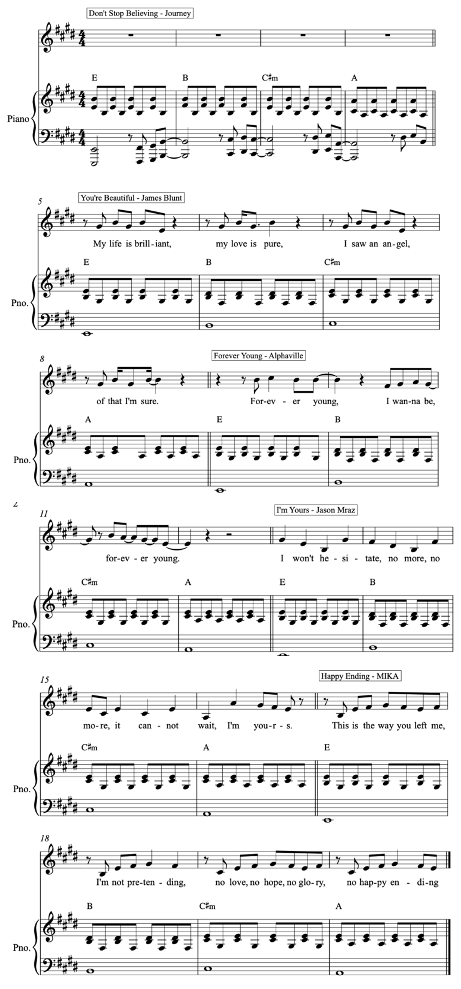
- The teacher provides a score with the four-chord progression, and students write their own melody and lyrics in pairs and notate this on the score.
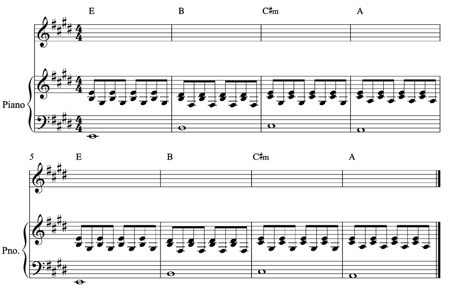
- Students use the score the have created as the basis for a composition (to be created in groups of 2 or 3). They can create this composition using acoustic or electronic instruments or using digital programs. Common software for this purpose includes Audacity (PC) and GarageBand (Mac)
- As they compose their piece, students
write composition notes regarding the decisions they are making about the piece. The compositional notes are structured around the elements of music and designed to support students to articulate and reflect on their creative decisions. This will be used as the basis for writing a
statement of musical intention.
The table below could be used to support the writing of compositional notes:
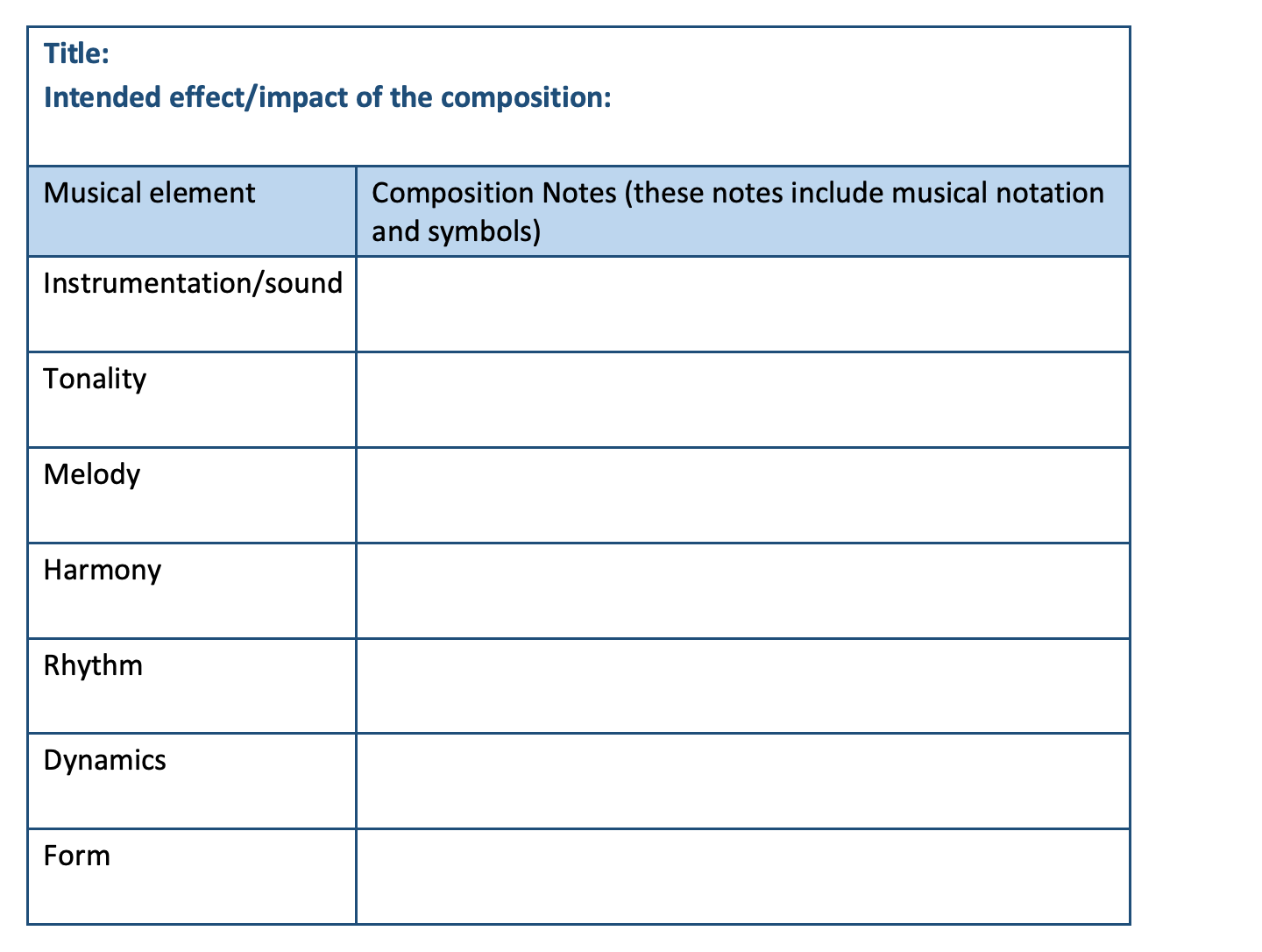
- During the composition process, the teacher asks groups of students to report on the progress of their composition. Students can report on the decisions they are making regarding the elements of music in their composition, and practice using the specific vocabulary of music in this update to the class. The composition notes temples could be shared on an electronic whiteboard so the class can link the student's oral use of musical terms and vocabulary with the written representation.
Arranging familiar songs
In this strategy, students use the melody of a nursery rhyme or song and arrange this using acoustic/electric instruments of technology. This strategy allows teachers to enable students to draw on texts that are meaningful to them and to draw on their cultural backgrounds and contexts.
- The teacher selects a nursery rhyme, shows the students the written score and lead students in a discussion of 'arranging' a piece.
- How students arrange this piece will depend on their musical literacy and experience. Arranging might involve setting the melody for different instruments to play, including a rhythmic or simply harmonic accompaniment, or arranging the song for an ensemble, such as string quartet.
- The teacher demonstrates these different ways of 'arranging' the song.
- Students select a poem or nursery rhyme as the basis for their composition.
- The teacher provides resources, or students can bring in texts from home. Notated melodies of nursery rhymes are easily accessible and free to download. For example, see
this link.
- Students complete a 'Compositional Notes' template for their arrangement.
The following template has been completed by a Year 9 or 10 student arranging the nursery rhyme 'Bingo' for String Quartet (VCAMUE040,
VCAMUE041,
VCAMUM043).
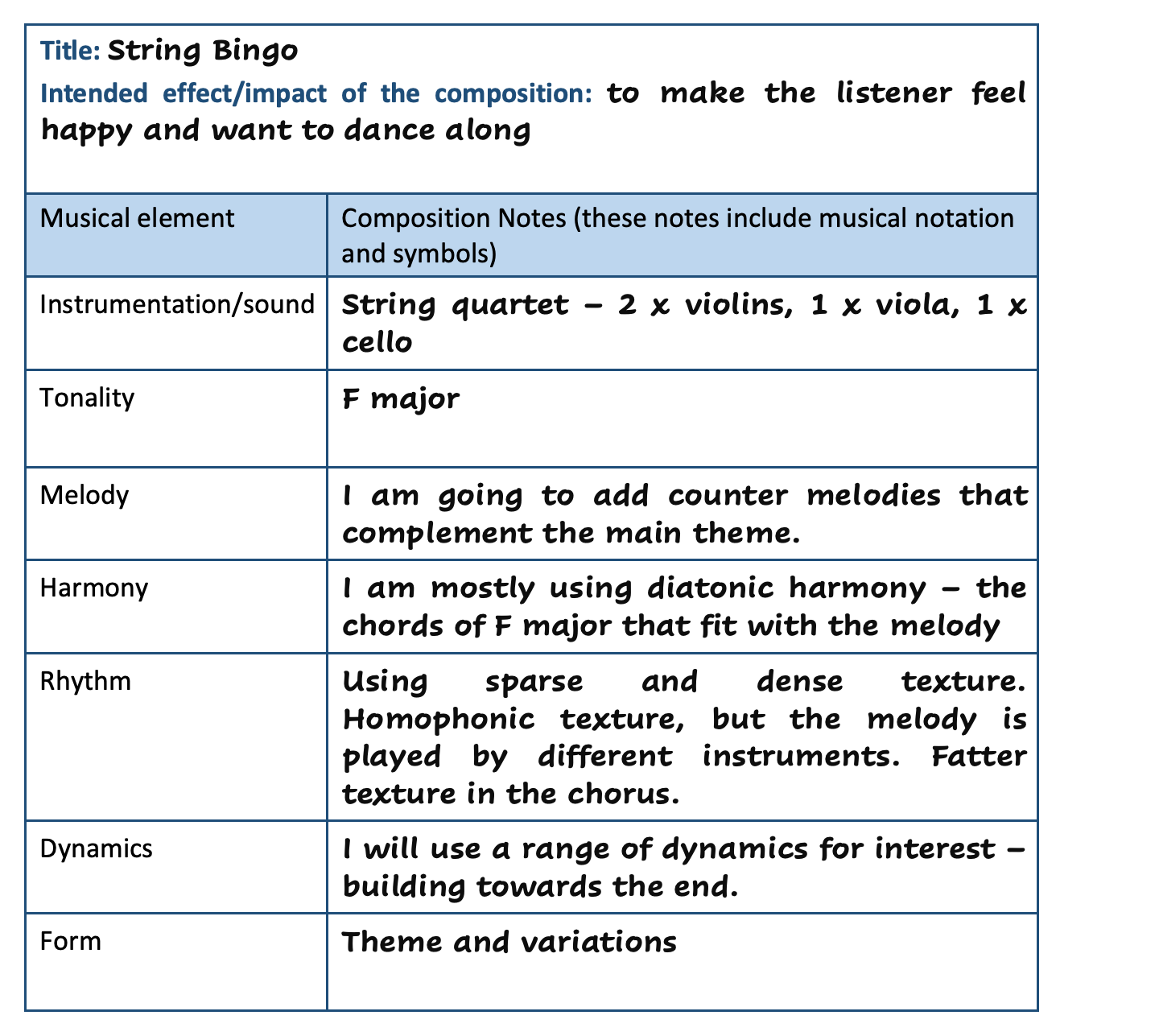
- Students create their composition, using agreed scoring (conventional or graphic notation) and if possible, perform their composition to the class.
See below the sample of a Year 9 or 10 student's arrangement of 'Bingo' for String Quartet with audio and score files.
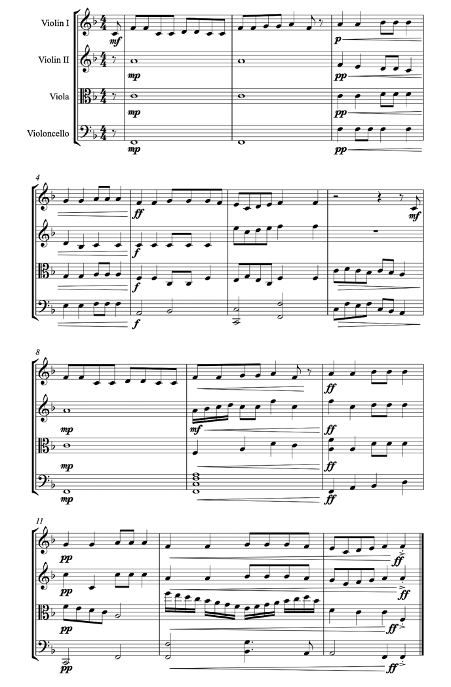
Audio file